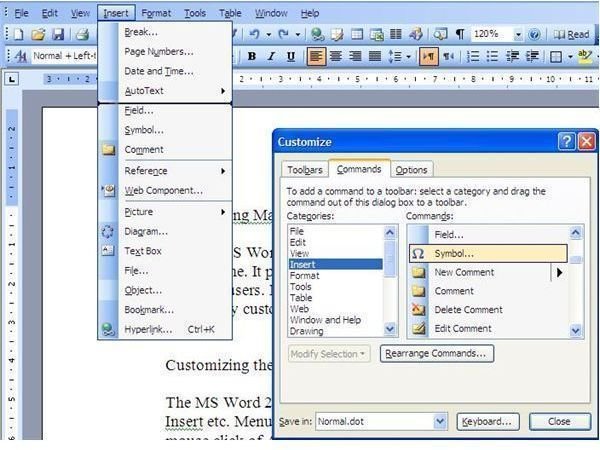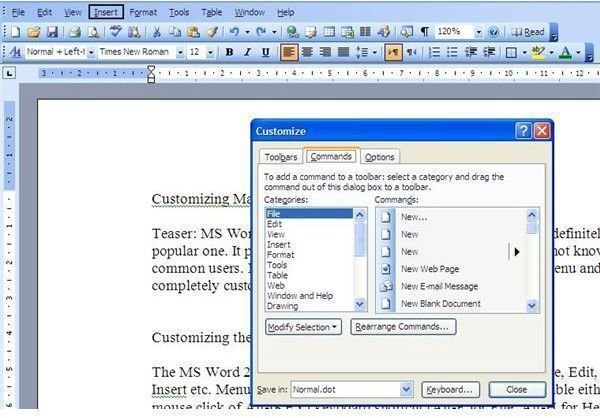Get the Most of Word 2003; Customizing Main Menu and Toolbars
Main Menu and Toolbars
You are probably quite familiar with the MS Word 2003. File, Edit, View, Insert and other menu sections, arranged in the well-known Microsoft order. This menu is accessible either via mouse click or by using Alt-[KEY] keyboard shortcuts, such as Alt-F for File or Alt-H for Help.
Below the main menu, there are toolbars that include many most common tasks. The most practical toolbars are the Standard toolbar (including File operations such as Save, New, Open; Undo-Redo arrows; Text zoom percentage and more) and the Formatting toolbar (to make your text Bold, Italic, Right-to-Left, Colored, bulleted and so on). The toolbars can be switched on and off via View-Toolbars (Alt-V,T on the keyboard) or by right-mouse click in the Menu/Toolbars area. I personally recommend also enabling the Drawing toolbar, which contains useful symbols to enhance your document, such as auto shapes and arrows, and a Visual Basic Toolbar (VBA in Word is really fun and pretty easy to learn, as described in this article).
Each of these menus and toolbars can be customized in just a few simple steps.
Docking and Undocking
One way to customize toolbars in Microsoft Word 2003 is by docking them at the top or bottom of the Word window. Alternatively, a toolbar can “float” on your screen. This is achieved by hovering the mouse over the right end of the toolbar until a drag handle is visible and then dragging the toolbar with the mouse away from its docked position.
Customizing the Main Menu
You can also alter the order of sections in the Main menu, add new main menu tabs and buttons and edit the contents of the present tabs. All of the above is very simple and can be achieved by customizing menus. To enter the customization mode, go to Tools -> Customize and pick the Commands tab.
Editing the Main Menu
When in the Customize mode, note that menus are still accessible but they do not execute functions. Instead, you can move the menus across the Main Menu, changing their order. You can also click on a menu and drag an item across menus or to the customizing window, removing it completely from that menu. You can add new buttons to a menu as well. Just find the desired action button in the list (they are grouped by functionality, but there is also a list of all commands available) and drag it to a menu.

Editing Toolbars
In the same way the Word 2003 Main Menu can be tailored, the toolbars are customizable as well. Go to Tools -> Customize and select the Commands tab. The buttons can be dragged from and into the toolbars in the same way as with the main menu.
Summary
In this article, you have learned to edit the look of your Word 2003 Main Menu and the toolbars. However, there is more. You can create a custom menu and have pictograms assigned to your buttons. This will be covered in the next article.
If you are a Word 2007 user, check out the Bright Hub tutorial, Modifying the Quick Access Toolbar in Microsoft Word.
